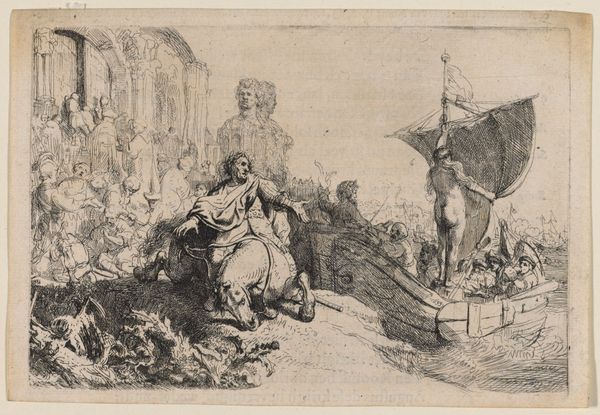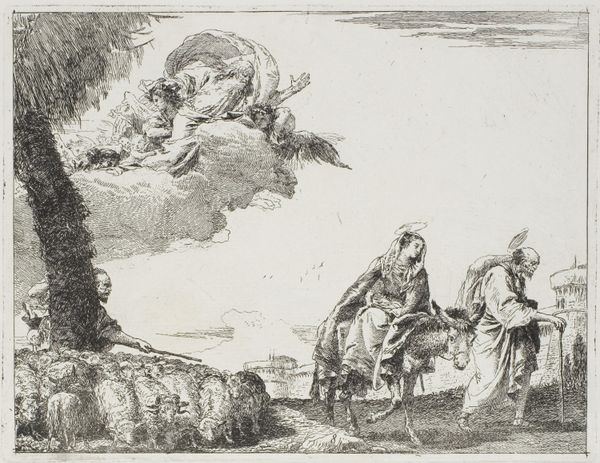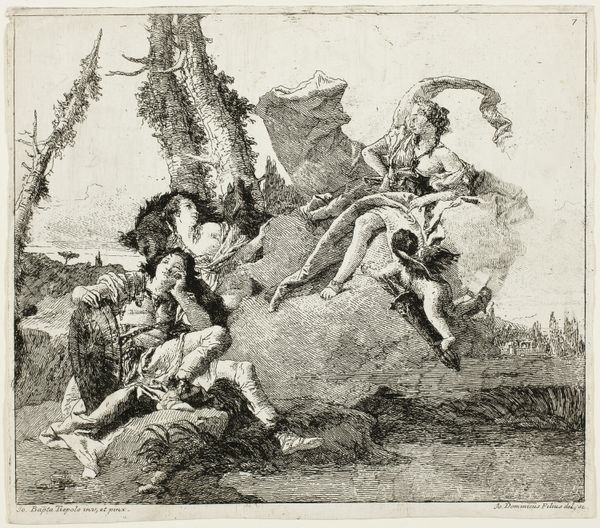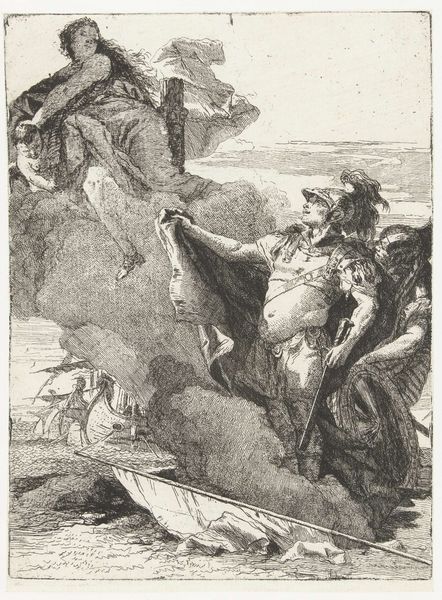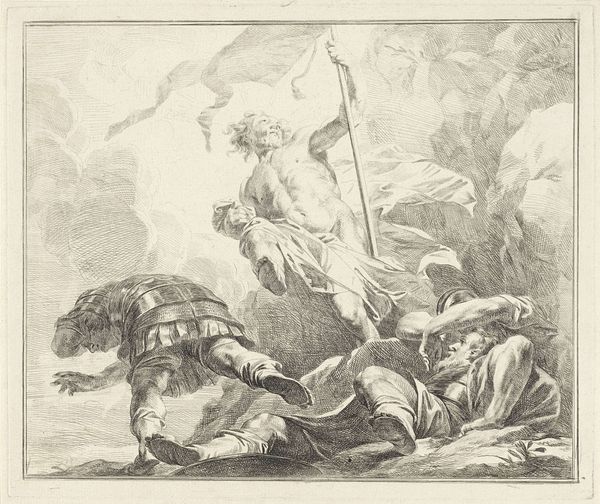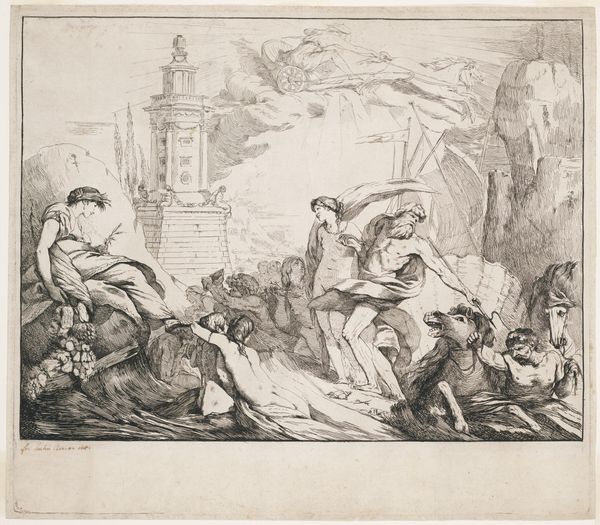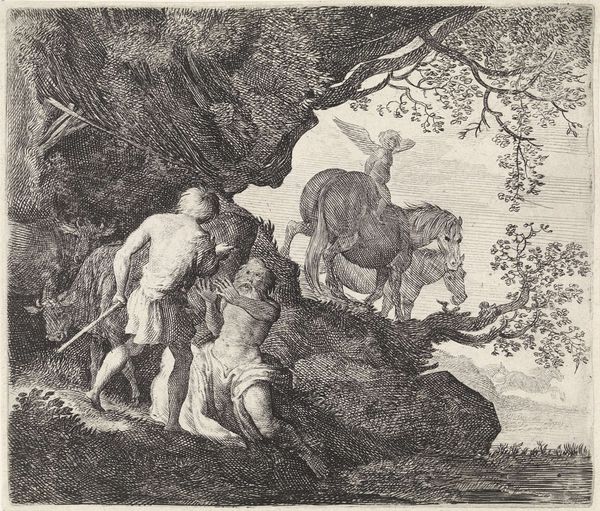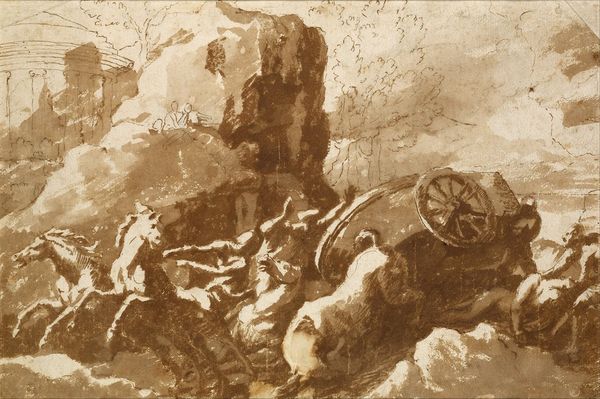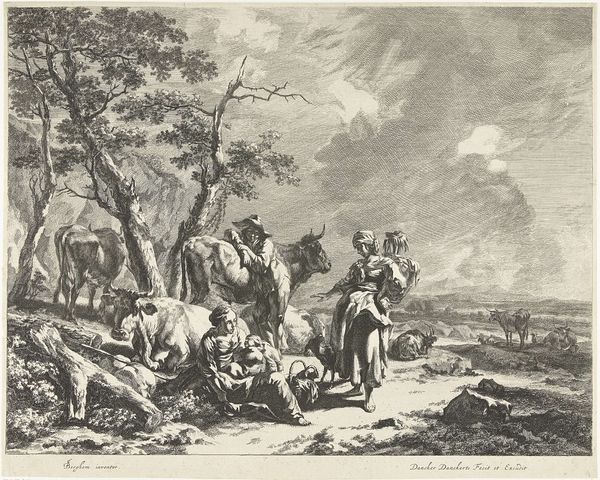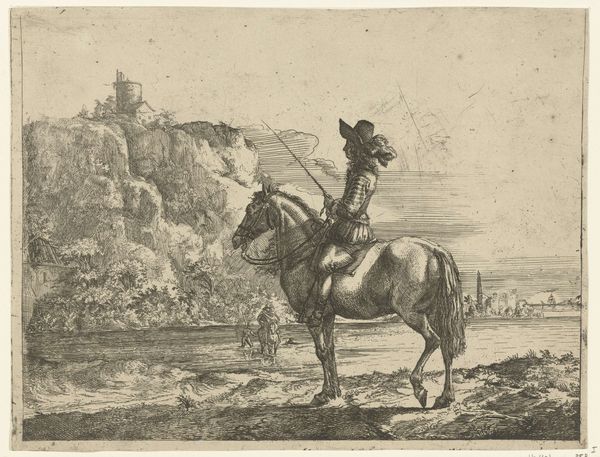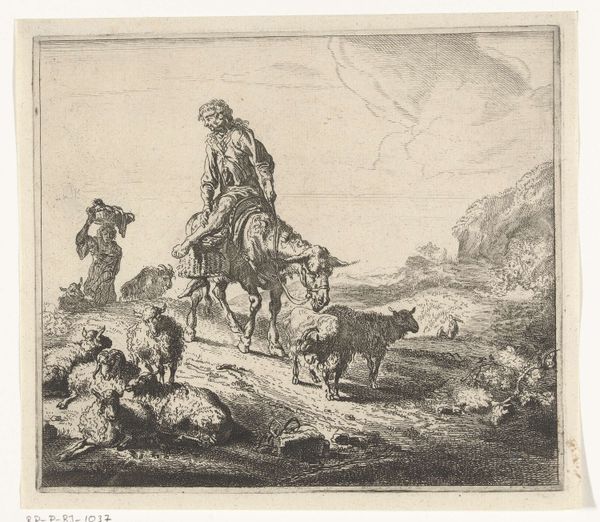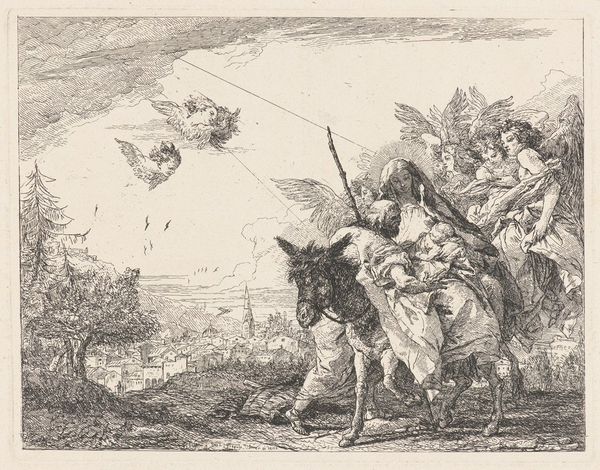
drawing, etching
#
drawing
#
narrative-art
#
baroque
#
etching
#
landscape
#
figuration
#
nude
Copyright: Public Domain: Artvee
Rembrandt van Rijn created the etching *The Ship of Fortune* during the Dutch Golden Age, a period marked by burgeoning global trade and its attendant risks and rewards. Here, Rembrandt deftly interweaves the themes of fortune, risk, and human endeavor. He presents a dynamic scene where a crowd eagerly engages with the promise of prosperity embodied by the ship. The naked female figure with her back to us, precariously holding the sail, introduces complex notions about vulnerability and exploitation within systems of power. How might her nakedness expose the ways in which certain bodies are made available? The ambiguity of the scene invites reflection on whether this figure is in control or being controlled. The etching is a complex allegory of its time, a time of social change and the expansion of the Dutch empire. What emotional and personal investments do we make in these systems that promise reward but often demand so much?
Comments
rijksmuseum about 2 years ago
⋮
In his book Der Zee-Vaert Lof (In Praise of Navigation), Elias Herckmans contends that Dutch maritime trade flourishes best in times of peace. In chapter three, he discusses the Pax Romana (Roman Peace). Rembrandt made a book illustration for this, in which he sums up the entire chapter. The nude female figure on the ship is Fortuna, prosperity, which favours sea trade when peace prevails.
Join the conversation
Join millions of artists and users on Artera today and experience the ultimate creative platform.
